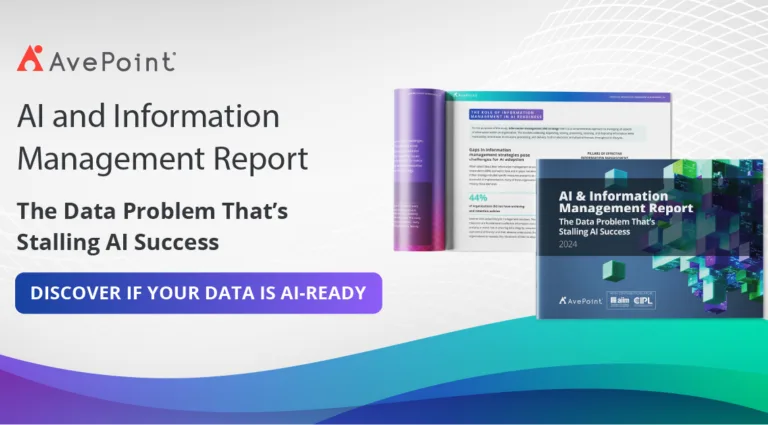In an era where data reigns supreme, powering everything from business decisions to personalized user experiences, the sheer volume of digital information is staggering; by 2025, the global data sphere is projected to balloon to an astronomical 175 zettabytes. This surge in data has created a situation where growth is outpacing organizations' ability to effectively store, secure, and manage it.
There is a dangerous reality that comes with the excess of digital information; if left unchecked, it can pose unforeseen risks to businesses. Already, nearly half of digital workers struggle to locate the information necessary to perform their roles effectively. Meanwhile, 78% of organizations are feeling overwhelmed by the sheer volume, velocity, and variety of information flooding their systems. Without proactive measures, these risks can undermine the very foundation of an organization.
The Consequences of Poor Data Management
When businesses initially embraced cloud technology, its promise instilled a sense of complacency around data management. With seemingly boundless storage and intuitive navigation tools, finding and storing information seemed effortless, leading many to neglect proper management practices. Now, as organizations grapple with bloated digital environments, this perception is rapidly changing, and the detrimental effects of unmanaged data are beginning to surface.
- Storage Costs
Retaining vast amounts of data can lead to mounting expenses associated with storing, managing, and processing this information, forcing businesses to allocate a significant portion of their budgets toward maintaining burgeoning data repositories.
A recent AvePoint study found that nearly 50% of organizational data is 5+ years old, meaning companies are likely paying for content they don’t even need anymore. These expenses strain financial resources and divert funds that could be invested in more strategic initiatives, impacting overall profitability and deterring investments in innovation, growth, or other more impactful areas.
- Cybersecurity Risks
CISOs can confirm this adage: the more data a business stores, the more entry points there are for attackers to exploit. As companies amass larger volumes of data, they become more attractive targets for cybercriminals and malicious actors. The consequences of a successful data breach can be devastating, ranging from financial losses and reputational damage to legal liabilities and erosion of customer trust.
For instance, the high-profile data breaches at Equifax, Yahoo, and Target highlight the far-reaching implications of such incidents. The Equifax breach exposed the personal information of over 143 million Americans, resulting in a $575 million settlement and a significant blow to the company's credibility. Similarly, the Yahoo breach affected all its 3 billion users and resulted in a $117.5 million class-action settlement.
These incidents may have made headlines, but these scenarios are happening to businesses all over the world every day; Forrester Research found that 77% of organizations experienced at least one breach in 2023.
- Data Mismanagement
With so much information at hand, keeping track of what data exists, its purpose, and who should have access to it can be a daunting task, leading to data mismanagement, where data is not correctly organized, maintained, or secured.
The result: 3 out of 4 executives do not trust their data, despite considering quality data essential to their success.
In today's data-driven world, where informed decision-making hinges on reliable data, this can be a critical competitive disadvantage, as businesses risk making flawed decisions or missing valuable opportunities due to unreliable data insights.
Moreover, data security can be harder to implement. Modern security standards like Zero Trust advocate for approaches like least-privilege access to data, yet implementing these measures can be challenging when organizations are creating new data at such a rapid pace that they can barely keep up with managing the data they already have. This presents significant security risks, particularly given the 71% increase in cyberattacks that used stolen or compromised credentials.
The Secret to Transforming Data from a Threat to a Tool
The secret to turning data from a potential liability into a powerful asset: implementing a robust information management strategy.
At the heart of this strategy should be the recognition that effective information management is about more than just storing data—it's about understanding it, organizing it, and ensuring its quality, accessibility, and usability throughout its lifecycle. By prioritizing these principles, businesses can harness the full value of their data while mitigating the risks associated with its accumulation and mismanagement.
First and foremost, establishing clear data governance policies is essential. These policies define how data is collected, stored, processed, and accessed within an organization, providing a framework for ensuring compliance with regulatory requirements, protecting sensitive information, and maintaining data integrity.
Regular data audits and purging of redundant, obsolete, and trivial (ROT) data are equally crucial components of a comprehensive information management strategy. By periodically reviewing and rationalizing stored data, businesses can reduce storage requirements, minimize the potential attack surface for cybercriminals, and ensure that only the most relevant and valuable data is retained.
Investing in information management tools and technologies can help streamline these processes, providing the infrastructure and capabilities necessary for effective management at scale.
By leveraging automation, machine learning, and other cutting-edge technologies, businesses can streamline data processes, improve data quality, and enhance decision-making capabilities across the organization.
However, technology alone is not enough. Equally important is ensuring that employees have the knowledge and skills necessary to effectively manage data. This requires ongoing training and education programs focused on best practices, data security protocols, and compliance requirements. By empowering employees to become stewards of data within their respective roles, businesses can foster a culture of data literacy and accountability that permeates throughout the organization.
Ultimately, by proactively applying robust data governance and information lifecycle principles, businesses can transform data from a potential threat into a strategic asset. B
The Bottom Line
In today's digital landscape, data is indeed the new currency – but it can also be a double-edged sword if not managed properly, and currently, a shocking two-thirds of organizations rate themselves as below average in managing the lifecycle of information as well as applying governance and compliance.
With the volume of digital data already doubling every two years, indiscriminate hoarding of data poses significant risks, such as increased vulnerability to data leaks and cyber-attacks, and hampers organizations’ ability to derive meaningful insights and make informed decisions.
By embracing a proactive and comprehensive approach to information management, organizations can harness the power of data while mitigating its potential risks. In the end, responsible data management is not just a matter of compliance or risk mitigation; it is a strategic imperative that can unlock new opportunities for innovation, growth, and competitive advantage.





